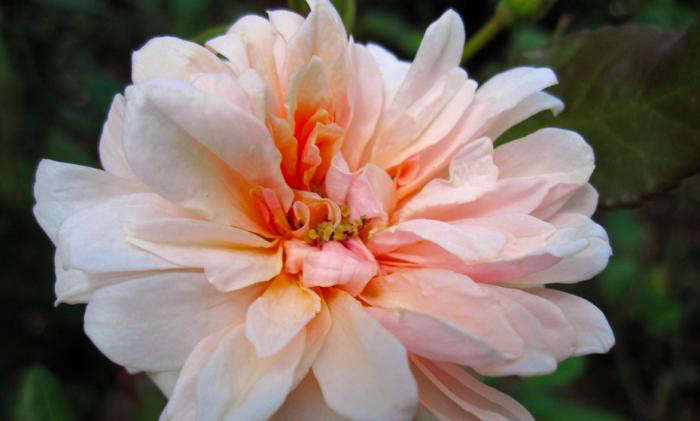Pick up any book or catalog of roses and you will be struck by the staggering number of forms, colors, and sizes available. But will they all fare equally well in your own garden? Of course not: you need help to wade through the multitudes, to select the best roses for your growing zone.
This would be the time to consult a local expert–and I was recently lucky enough to get the advice of a woman who cares for more than a thousand kinds of roses at the Brooklyn Botanic Garden, in one of North America’s largest collections. Her recommendations for Northeastern gardens:
Above: Sarah Owens is the curator of the Cranford Rose Garden in the Brooklyn Botanic Garden. She gave me a list of roses she would recommend for amateur gardeners here in the Northeast… plants that can survive our cold winters but demand minimal fussing from their caretakers. Photograph by Jeanne Rostaing.
At the top of Sarah Owens’ list is Yankee Lady, a vigorous hybrid rosa rugosa with year-round interest: big fragrant pink flowers in spring and summer, good fall color, and bright orange hips in winter. Very little pruning is required and this rose will even tolerate some shade. It also stands up to storms and salt and is a good choice for areas that require de-icing. Available for spring shipment, Yankee Lady is $15 from North Creek Farm.
Above: Beverly is a new hybrid tea introduced by Kordes, the German breeders, in 2008. It is both intensely fragrant and disease resistant, a very rare combination in a hybrid tea. Its pink flowers are held upright on long stems. This rose reaches a height of four feet and requires full sun; $19.95 from Pallatine Roses. Photograph via Palatine Roses.
Above: Perl d’Or is a small antique rose that blooms in clusters. Its flowers start out as orangey buds which change to a peachy apricot color as they open. This rose resists powdery mildew and black spot and requires only light pruning because it blooms off its old panicles. It is fragrant and flowers throughout the season; available for $18.95 from Antique Rose Emporium. Photograph courtesy of Brooklyn Botanic Garden.
If you have plenty of space and would like a climbing rose, Owens recommends the vigorous City of York, available seasonally for $14.95 from Brushwood Nursery. It is fragrant, likes a sunny spot and, once established, will bloom repeatedly throughout the season. Climbers require pruning, which Owens recommends doing when the plant is dormant and temperatures are slightly below freezing.
Above: Other climbers Owens recommends include Jasmina, a modern climber with fragrant double pink flowers, $19.95 from Palatine Roses, and Francis E. Lester with panicles of musky white blooms that give way to gorgeous red hips in winter ($14.95 from High Country Roses). Photograph by Huhu via Wikimedia.
Since the weather will still be cold when you plant, ask the grower if your roses have been grown in a greenhouse. If so, you will have to harden off the plants before you can put them in the ground. Sarah Owens says the biggest mistake made by home gardeners is choosing the wrong plants. Make sure the roses you choose are the right ones for your garden and you can look forward to a gorgeous, sweet smelling summer.
For see more roses planted alongside other flowers in the garden, see A Riot in Berkeley: Roses Gone Wild.
Finally, get more ideas on how to successfully plant, grow, and care for rose with our Rose: A Field Guide.
Finally, get more ideas on how to plant, grow, and care for various perennial plants with our Perennials: A Field Guide.

















Have a Question or Comment About This Post?
Join the conversation